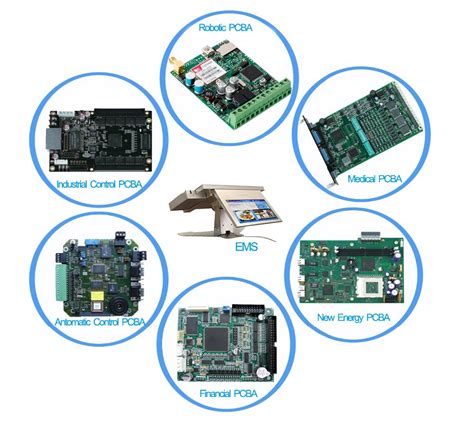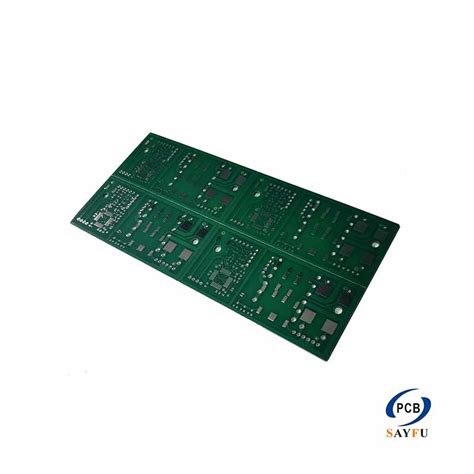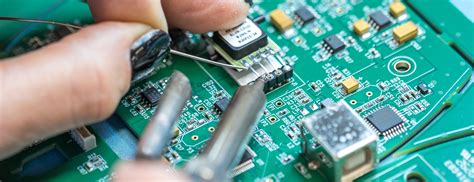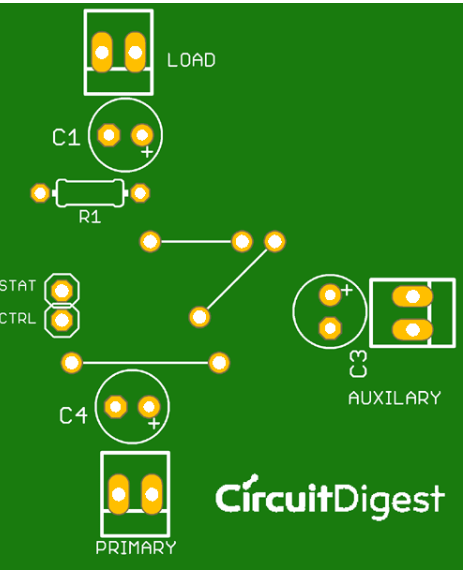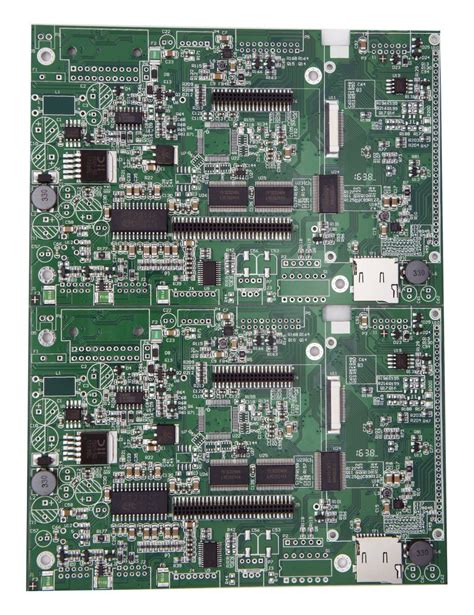Optimizing Electronics Production with OEM PCB Manufacturing

Key Takeaways
When navigating PCB manufacturing for your electronics projects, understanding core advantages helps optimize outcomes. Partnering with established PCB manufacturing companies provides access to advanced technologies and expertise, ensuring your designs meet both performance benchmarks and regulatory requirements. A critical factor is balancing PCB manufacturing cost with quality—experienced OEMs leverage economies of scale and material optimization to reduce expenses without compromising reliability.
"Always verify a manufacturer’s certifications, such as ISO 9001 or IPC-A-610 compliance, to align with industry standards and minimize production risks."
For businesses scaling operations, PCB manufacturing business models thrive on streamlined workflows. Automated assembly lines and rigorous testing protocols accelerate turnaround times while maintaining consistency—key for high-volume orders. Additionally, design-for-manufacturability (DFM) reviews during prototyping can prevent costly revisions later.
Modern PCB manufacturing also prioritizes sustainability, with many providers adopting lead-free processes and recyclable materials. To stay competitive, consider partners like Andwin PCB, who specialize in end-to-end solutions from prototyping to mass production. Their expertise in minimizing PCB manufacturing cost while ensuring compliance can help you adapt to market demands faster.
By aligning with OEMs that emphasize transparency and scalability, you gain flexibility to adjust production volumes, experiment with new materials, or integrate emerging technologies like HDI boards—all while maintaining a focus on long-term cost efficiency.
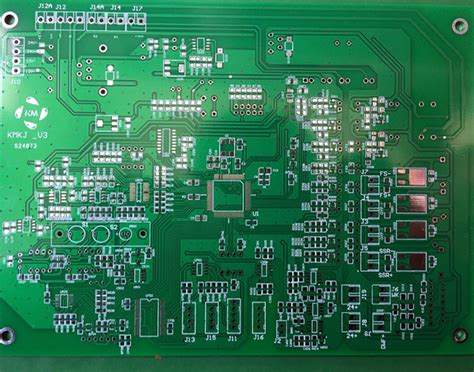
OEM PCB Manufacturing Essentials
When navigating pcb manufacturing partnerships, understanding the core elements that define expert-driven production workflows becomes crucial. Your choice of pcb manufacturing companies directly impacts not only the quality and reliability of your electronics but also the long-term viability of your pcb manufacturing business. At its foundation, OEM collaboration begins with design synchronization—aligning your product specifications with the manufacturer’s capabilities to minimize pcb manufacturing cost while maximizing performance.
A critical advantage lies in leveraging standardized processes that integrate advanced prototyping, material sourcing, and automated assembly. Reputable partners employ design for manufacturability (DFM) principles to identify potential bottlenecks early, reducing rework and material waste. For instance, optimizing panel utilization during fabrication can lower per-unit expenses by up to 20%, directly benefiting your bottom line.
Quality assurance protocols further distinguish top-tier providers. Rigorous testing phases—including automated optical inspection (AOI) and in-circuit testing (ICT)—ensure compliance with IPC-A-610 standards, mitigating risks of field failures. This becomes especially vital when scaling production, as consistent output relies on repeatable processes and traceability systems that track components from procurement to final assembly.
Supply chain resilience also plays a pivotal role. Established pcb manufacturing companies maintain vetted networks for raw materials, shielding your operations from geopolitical disruptions or component shortages. By consolidating orders and negotiating bulk pricing, they help stabilize pcb manufacturing cost fluctuations, a strategic advantage for startups and enterprises alike.
Finally, scalability demands flexibility in order volumes. Whether ramping up for mass production or pivoting to low-volume, high-mix batches, the right OEM partner adapts workflows without compromising turnaround times. This agility ensures your pcb manufacturing business remains responsive to market shifts while maintaining stringent quality benchmarks.
As you evaluate collaborators, prioritize transparency in cost structures, certifications (like ISO 9001 or UL listing), and technological investments—factors that collectively define OEM essentials in today’s competitive landscape.
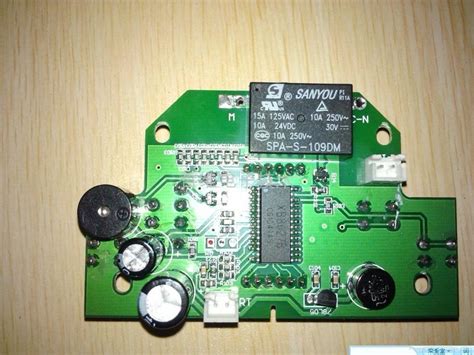
Cost-Effective PCB Production
When scaling electronics production, managing PCB manufacturing costs is critical to maintaining profitability without compromising quality. OEM partnerships enable you to leverage economies of scale, as PCB manufacturing companies often procure materials in bulk and optimize production workflows to reduce per-unit expenses. By integrating design-for-manufacturability (DFM) principles early in the process, you can minimize material waste and avoid costly redesigns—key factors in controlling PCB manufacturing business overhead.
Advanced fabrication techniques, such as automated optical inspection (AOI) and panelization, further drive down PCB manufacturing expenses by improving yield rates and reducing manual labor. For instance, consolidating multiple designs into a single panel maximizes material usage, directly lowering PCB manufacturing cost per board. Additionally, partnering with experienced suppliers ensures access to cost-efficient substrates and finishes, like FR-4 or lead-free HASL, tailored to your project’s requirements.
Transparency in pricing models is another advantage of working with established PCB manufacturing companies. Many offer tiered pricing based on order volume, allowing you to align expenses with production forecasts. Pro tip: Request detailed breakdowns of tooling, setup, and testing fees to identify hidden costs. This approach not only streamlines budgeting but also highlights opportunities for long-term savings, such as repeat-order discounts or consignment inventory agreements.
Ultimately, balancing affordability with reliability requires a strategic approach. By prioritizing suppliers with robust quality controls and scalable infrastructure, you ensure that PCB manufacturing cost reductions don’t come at the expense of performance—a foundation for building competitive, market-ready electronics.
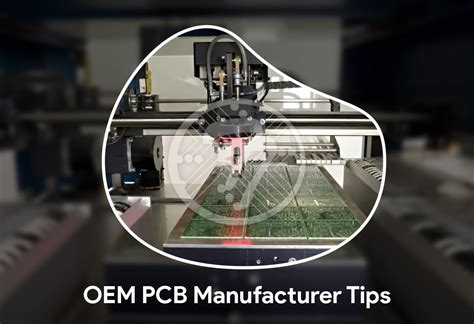
Quality Assurance in PCB Assembly
When partnering with PCB manufacturing companies, understanding their quality assurance (QA) protocols becomes critical to ensuring reliability in your electronics production. Rigorous QA processes minimize defects, reduce PCB manufacturing cost overruns, and safeguard your brand’s reputation. Modern automated optical inspection (AOI) systems, for instance, scan boards at micron-level precision, catching soldering flaws or misalignments invisible to the naked eye.
A robust QA framework typically includes:
- Design-for-manufacturability (DFM) checks to preempt production bottlenecks
- In-circuit testing (ICT) for validating electrical performance
- X-ray inspection for hidden defects in ball grid arrays (BGAs)
| QA Method | Key Benefit | Impact on Cost |
|---|---|---|
| AOI | High-speed defect detection | Reduces rework expenses |
| ICT | Validates circuit functionality | Prevents field failures |
| Thermal Stress Tests | Ensures durability | Lowers warranty claims |
For businesses scaling their PCB manufacturing business, standardized QA processes enable consistent output across batches. Leading manufacturers integrate statistical process control (SPC) tools to monitor production trends, ensuring deviations are corrected in real time. You’ll also want to verify compliance with industry-specific certifications like ISO 9001 or IPC-A-610, which signal adherence to global quality benchmarks.
While advanced QA systems may initially raise PCB manufacturing cost, they prevent costly recalls and delays downstream. By prioritizing traceability—tracking each component from sourcing to final assembly—you maintain accountability across the supply chain. This becomes especially vital when producing high-volume or mission-critical devices, where even minor flaws can escalate into systemic failures.
Transitioning to the next phase, scaling production efficiently relies on these QA foundations to balance speed and precision. After all, quality isn’t just a checkpoint—it’s woven into every layer of PCB manufacturing.
Scaling Electronics Production Efficiently
When expanding your electronics output, partnering with PCB manufacturing companies that specialize in high-volume production ensures you avoid bottlenecks while maintaining quality. These suppliers leverage advanced automation and modular production lines to adjust output rapidly, whether you’re ramping up for seasonal demand or launching a new product line. A key advantage lies in their ability to optimize PCB manufacturing cost through economies of scale—bulk material procurement, shared engineering resources, and streamlined testing protocols reduce per-unit expenses without compromising reliability.
For businesses in the PCB manufacturing business, scalability isn’t just about increasing quantities—it’s about adaptive workflows. Reputable manufacturers employ design-for-manufacturability (DFM) analysis early in the process, identifying potential assembly challenges before they delay timelines. This proactive approach minimizes redesign cycles, allowing you to shift from prototype phases to mass production faster. Additionally, vertically integrated partners offer end-toend solutions, handling everything from component sourcing to final testing under one roof, which simplifies logistics as order volumes grow.
To maintain consistency at scale, leading PCB manufacturing providers implement real-time monitoring systems. Sensors track yield rates, defect patterns, and machine performance, enabling immediate adjustments to reduce waste. This data-driven model not only accelerates throughput but also aligns with lean manufacturing principles, ensuring your production remains agile even during market fluctuations. By aligning with a partner that prioritizes scalable infrastructure, you gain the flexibility to meet shifting demand while keeping per-unit costs predictable—a critical factor for long-term competitiveness in electronics markets.
This operational efficiency naturally extends to compliance considerations, which become more complex as production scales. Trusted manufacturers integrate regulatory adherence into every stage, ensuring your expanded output meets global standards without requiring costly retrofits.
Meeting PCB Compliance Standards
Navigating regulatory requirements is a critical step in PCB manufacturing, where adherence to industry standards directly impacts product reliability and market access. When partnering with certified PCB manufacturing companies, you ensure that every phase—from material selection to final testing—aligns with international benchmarks like RoHS, IPC-A-610, and ISO 9001. These standards mitigate risks of component failure, environmental non-compliance, or legal penalties, which can escalate PCB manufacturing cost if overlooked.
A robust compliance strategy begins with design validation. Advanced PCB manufacturing business workflows integrate automated design-for-manufacturability (DFM) checks to flag potential violations early, such as trace spacing errors or prohibited materials. For instance, lead-free soldering processes are no longer optional for electronics sold in the EU, and failing to adopt them could disqualify your product from key markets. By embedding compliance into the prototyping stage, you avoid costly redesigns post-production.
Material traceability is another cornerstone. Reputable manufacturers maintain detailed documentation for every component, ensuring substances like REACH-restricted chemicals stay below permissible thresholds. This level of transparency not only simplifies audits but also builds trust with end-users who prioritize sustainability.
Cost optimization doesn’t have to conflict with compliance. Leading PCB manufacturing companies leverage economies of scale to source compliant materials at competitive rates, balancing PCB manufacturing cost with regulatory demands. Additionally, their expertise in test protocols—such as thermal cycling or electrical safety checks—reduces yield loss, ensuring compliance doesn’t come at the expense of profitability.
Ultimately, aligning with a partner that prioritizes compliance transforms regulatory hurdles into competitive advantages. Their familiarity with evolving standards—like emerging IoT security guidelines—future-proofs your production pipeline, allowing you to focus on innovation while they handle the complexities of certification.
Streamlined Design-to-Production Workflows
When partnering with PCB manufacturing companies, you gain access to integrated processes that bridge design intent with production realities. By aligning engineering teams with manufacturing experts early in the development phase, potential bottlenecks—such as component compatibility or layer stack-up issues—are resolved before prototyping begins. This proactive collaboration reduces PCB manufacturing cost by minimizing redesign cycles and material waste, ensuring your project stays within budget without compromising performance.
Modern PCB manufacturing workflows leverage advanced tools like automated design rule checks (DRC) and simulation software to validate layouts against real-world production constraints. For instance, design for manufacturability (DFM) principles ensure your board’s traces, pad sizes, and solder mask align with the capabilities of high-volume assembly lines. Such precision not only accelerates time-to-market but also strengthens quality outcomes, as fewer errors translate to higher reliability in end products.
For businesses scaling their PCB manufacturing business, streamlined workflows enable seamless transitions from low-volume prototyping to mass production. Automated documentation systems and standardized file formats (e.g., Gerber X2) eliminate manual data handoffs, while real-time tracking portals provide visibility into every stage—from fabrication to testing. This transparency allows you to adjust timelines or specifications dynamically, responding to market demands without disrupting supply chains.
Ultimately, a unified design-to-production approach transforms how you manage complexity. Whether optimizing for PCB manufacturing cost or ensuring compliance with industry standards, integrated workflows empower you to deliver innovative electronics with precision and efficiency.

Advantages of OEM PCB Partnerships
When scaling your electronics production, collaborating with PCB manufacturing companies offers strategic benefits that extend beyond basic fabrication. By leveraging their expertise, you gain access to optimized design-to-production workflows that minimize errors and accelerate time-to-market. These partnerships allow you to focus on core competencies like product innovation while outsourcing complex PCB manufacturing processes to specialists equipped with advanced tools and industry certifications.
One of the most significant advantages lies in PCB manufacturing cost control. Established OEMs achieve economies of scale through bulk material procurement and automated assembly lines, reducing per-unit expenses without compromising quality. This cost efficiency is particularly valuable for startups and mid-sized enterprises aiming to compete in price-sensitive markets. Additionally, these providers often offer flexible pricing models, such as volume-based discounts or tiered service packages, aligning with your PCB manufacturing business growth trajectory.
Quality assurance is another critical benefit. Reputable partners implement rigorous testing protocols, including automated optical inspection (AOI) and functional testing, ensuring compliance with international standards like IPC-A-600 and ISO 9001. This reduces the risk of recalls or post-production defects, safeguarding your brand reputation. Furthermore, their familiarity with regional regulations—such as RoHS or REACH—simplifies navigating compliance hurdles in global markets.
Scalability becomes seamless with OEM partnerships. Whether you’re ramping up production for a seasonal product or expanding into new regions, PCB manufacturing companies can swiftly adjust output levels using modular production lines. This agility eliminates the need for costly capital investments in machinery or facility upgrades.
By integrating with an OEM’s ecosystem, you also gain access to collaborative engineering support. Many providers offer design-for-manufacturability (DFM) reviews, identifying potential bottlenecks early and refining layouts to enhance yield rates. This proactive approach not only streamlines workflows but also extends the lifecycle of your PCB designs.
In essence, strategic alliances with OEMs transform PCB manufacturing from a transactional process into a value-driven partnership, balancing technical precision, financial efficiency, and operational scalability.
Emerging Trends in PCB Manufacturing
As you explore strategies to optimize electronics production, understanding emerging trends in PCB manufacturing becomes crucial for maintaining a competitive edge. One notable shift is the growing adoption of smart factory ecosystems, where PCB manufacturing companies integrate Industrial IoT (IIoT) systems to enable real-time monitoring of production lines. These systems optimize equipment performance, reduce material waste, and predict maintenance needs—directly addressing PCB manufacturing cost challenges while improving yield rates.
Another development reshaping the industry is the rise of sustainable practices. With stricter environmental regulations and consumer demand for greener electronics, manufacturers are prioritizing lead-free soldering and recyclable substrate materials. This shift not only aligns with global compliance standards but also opens new opportunities in the PCB manufacturing business, particularly for partners emphasizing eco-friendly supply chains.
Advanced automation is another trend transforming workflows. Robotic assembly systems now handle intricate tasks like high-density interconnect (HDI) board population, ensuring precision that minimizes human error. For businesses scaling production, this translates to faster turnaround times and consistent quality—key factors when balancing PCB manufacturing cost with performance requirements.
Moreover, the integration of additive manufacturing techniques, such as 3D-printed circuitry, is pushing design boundaries. These methods allow for rapid prototyping of complex geometries, enabling you to test innovations before committing to large-scale production. Paired with AI-driven design validation tools, this trend reduces development cycles and mitigates risks in new product launches.
Simultaneously, geopolitical shifts are prompting companies to rethink supply chain models. Many PCB manufacturing companies are establishing regionalized production hubs to minimize logistics disruptions, a strategy that also helps manage tariffs and trade compliance complexities.
As these trends converge, they redefine what’s possible in PCB manufacturing, offering smarter, greener, and more resilient pathways to meet evolving market demands. The key lies in partnering with manufacturers who actively invest in these innovations—ensuring your electronics stay ahead in performance, scalability, and cost-efficiency.
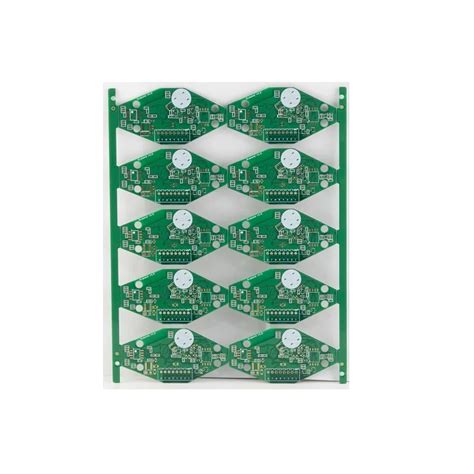
Conclusion
When navigating the complexities of modern electronics production, partnering with pcb manufacturing companies becomes the final piece in your strategic puzzle. By leveraging expert-driven pcb manufacturing workflows, you not only optimize pcb manufacturing cost but also future-proof your pcb manufacturing business against shifting market demands. These collaborations ensure that every stage—from prototyping to mass production—aligns with rigorous quality benchmarks while maintaining the agility needed to scale operations seamlessly.
The true value lies in how these partnerships dissolve traditional barriers. For instance, advanced design validation tools minimize costly revisions, and automated assembly lines accelerate turnaround without compromising precision. This harmonization of efficiency and compliance is critical, especially when adhering to international standards like ISO or IPC becomes non-negotiable for market entry.
Looking ahead, the evolution of pcb manufacturing will continue to prioritize sustainability and smarter resource allocation. Emerging trends such as AI-driven process optimization and green manufacturing practices are reshaping cost structures, allowing businesses to reinvest savings into innovation. By aligning with forward-thinking pcb manufacturing companies, you position your operations at the intersection of reliability and adaptability—essential traits for thriving in an industry where margins tighten and timelines shrink.
In essence, the decision to integrate specialized pcb manufacturing expertise isn’t just about outsourcing—it’s about building a resilient foundation for growth. Whether you’re managing pcb manufacturing cost pressures or navigating compliance complexities, the right partnership transforms challenges into competitive advantages, ensuring your electronics projects meet both today’s standards and tomorrow’s opportunities.
Frequently Asked Questions
How do you choose the right PCB manufacturing partner?
When selecting a PCB manufacturing company, prioritize firms with certifications like ISO 9001 or IPC-A-610. Look for expertise in handling your product’s complexity, transparent PCB manufacturing cost structures, and a track record of on-time delivery. Scalability and responsive communication are equally critical for long-term partnerships.
What factors influence PCB manufacturing cost?
Costs depend on material quality, layer count, board size, and production volume. Advanced features like high-density interconnects or specialized coatings may increase expenses. Partnering with PCB manufacturing companies that offer bulk discounts or design-for-manufacturability (DFM) analysis can optimize spending without compromising quality.
How does quality assurance work in PCB manufacturing?
Reputable providers implement multi-stage inspections, including automated optical testing (AOI) and functional checks. They adhere to industry standards like IPC Class 2 or 3, ensuring reliability in harsh environments. Always request detailed test reports to verify compliance with your specifications.
Can PCB manufacturing businesses support rapid scaling?
Yes, established PCB manufacturing partners use modular production lines and agile supply chains to accommodate fluctuating demand. Some offer inventory management services or consignment stock to minimize lead times during peak production cycles.
What compliance standards apply to PCB manufacturing?
Regulations like RoHS, REACH, and UL certification are mandatory for most markets. Medical or automotive applications may require additional approvals, such as IATF 16949. Ensure your manufacturer’s workflows align with your target regions’ legal frameworks.
How are emerging trends impacting PCB manufacturing companies?
Advancements like IoT-compatible designs and additive manufacturing are reshaping the industry. Many providers now integrate AI-driven defect detection or eco-friendly materials to meet sustainability goals. Staying updated on these innovations ensures your products remain competitive.
Ready to Optimize Your Electronics Production?
Please click here to explore tailored PCB manufacturing solutions that balance cost, quality, and scalability. Our experts streamline design-to-production workflows, ensuring your projects meet compliance and market demands seamlessly.

